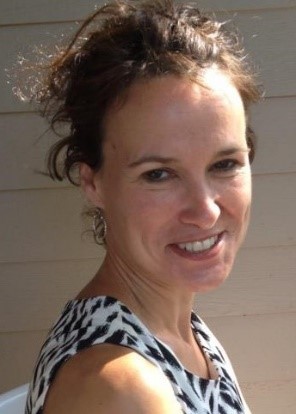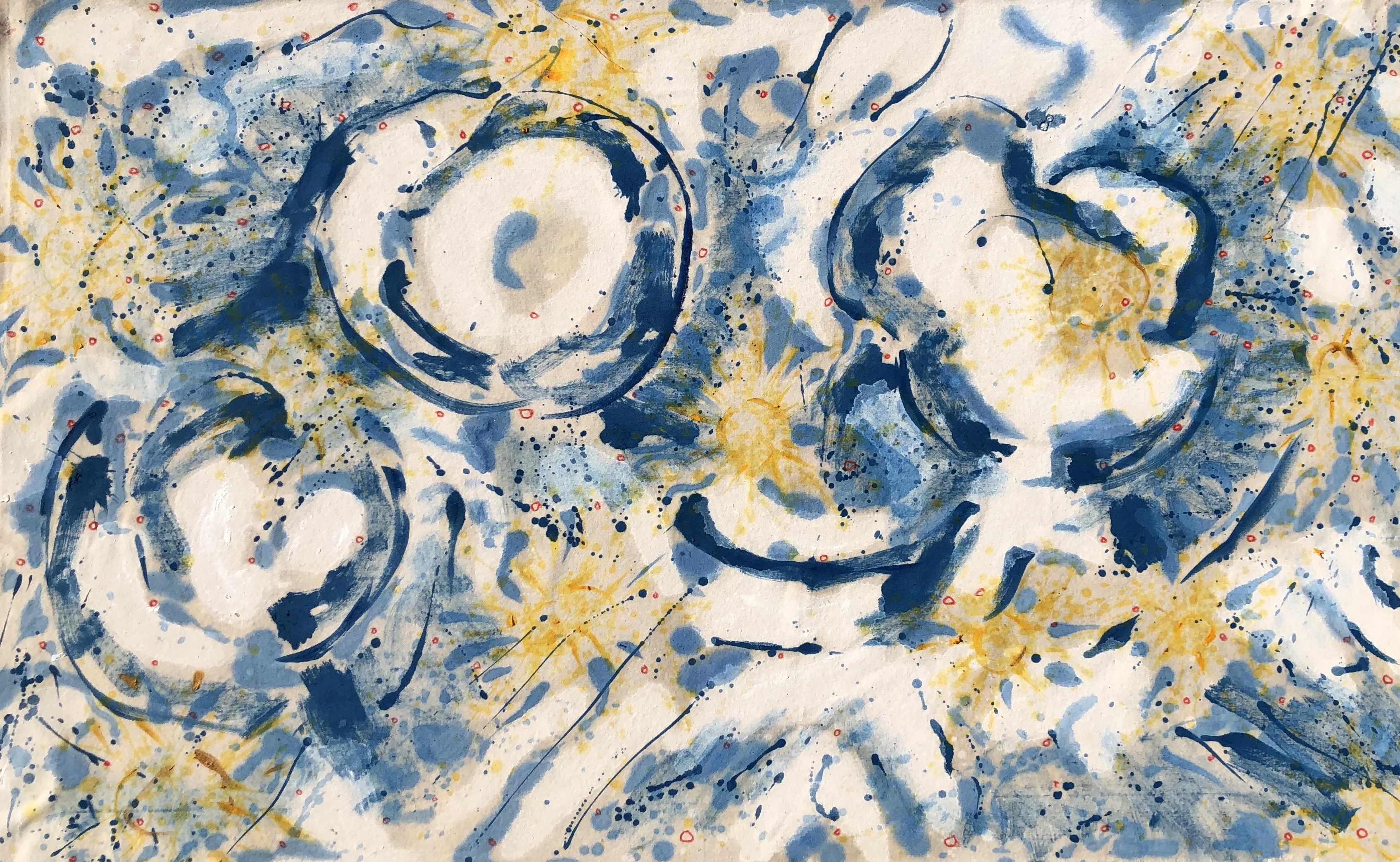“The death of creativity is the birth of boredom.”
Creativity Comes in All Forms
Creativity is not about being an artist, or even having the skills to draw beyond a stick figure. I’m an artist and I can barely draw a stick figure myself. I don’t need to be able to draw to be creative, to be an artist, or to express myself in other forms. Creativity is more about the spirit of expression, period. It’s about being open to exploration and seeing what comes out. This tends to be my own artistic process, and I’ve painted some wonderful things in my life because I didn’t censure myself on what was the definition of what was possible or permissible.

The need for creativity at work is more profoundly needed now more than ever. That’s because in a global world everything and everyone is interconnected, and we live in a populous and complicated world. It’s because what you do matters in a world where we have a lot of problems that need creative thinking to solve them.
Unfortunately, the western-oriented business mindset doesn’t often allow for creativity in the workplace. For all of the “think-outside-of-the-box” mantras, many people resist doing it themselves and don’t want you doing it either. That’s why it’s hugely important to own your creativity, express it, and encourage it in others. We won’t solve the world’s problems and make this place better for ourselves, our children, or anyone, if we don’t open up our minds and seek wisdom in all places available.
Creativity is about….
- Listening to the inner voice and allowing it expression
- Being open to other ways of doing things
- Trying new things
- Imagination and exploration
- Freedom to be free, and you and me
- Unbridled enthusiasm for the possibilities of what could be
- Dedicating time and resources to letting your mind wander
- Expression, expression, expression
- Using multiple tools, disciplines, and talents
- Being willing and open to investigating the view points and angles

Creativity is not about…
- Being tied to the past and the way it’s always been done
- Writing something off immediately, without first exploring where it might lead
- Calling something “crazy” just because it’s foreign or scary to you
- Negating others and their unique perspective
- Denying the inner voice and vision of yourself or others
Why we Fear Creativity
I’ve often found myself working in a corporate culture where people don’t like you to ask questions. Or, challenge the status quo. Creativity is often maligned and misunderstood. That’s because most people were never fully allowed to express their creative genius. That spark was killed a long time ago, as far back as grade school even. How? First, let’s talk about the fact that the arts have been squeezed out of school curricula for decades now. Its importance and value has been diminished in our culture. To me, this is a sad state of affairs and makes the world a less lively, interesting, and enjoyable place.
The Loss of Art in Our Lives
The emphasis now is on science and technology – it’s as if what makes us fundamentally human – our creative spirit – is being sucked out of us. Only recently has STEM (science, technology, engineering, and math) received an A (art) to make STEAM. That shows some good promise for the future. But, it doesn’t solve the fact that many of us right now don’t know how to embrace our inner creative genius, or worse yet, believe we don’t have one. If you grew up doing some art or music in grade school, you may have had a bad experience in being told your work didn’t measure up. Art was supposed to look a certain way. Music was to be played a certain way.
Creativity as Expression of Possibilities
I often get people asking me questions about my abstract art, “What is it supposed to be?” they ask.

They are expecting a realistic portrayal of something, but that’s not what abstract is about. It’s about pure expression – sometimes it represents an emotion, an ideal, or a construct, but other times not. And, more importantly, it’s about the viewer’s interpretation and emotional resonance in the end – and this varies by each individual and their unique play and interaction with the art work. This makes it pretty damn personal. If what they were looking at was an exact replica of a scene of people sitting on a bench, how much room for play would there be in that?
If we tackled every problem or every business need, or every customer’s pain point the same way every time, how innovative do you think we’d be? How much would our company grow, how much would we grow?
More importantly, how boring would that be?
Embracing Creativity in our Lives
The death of creativity is the birth of boredom. If you want listless, disengaged employees, just punching numbers all day, kill their creative expression. It’s a rigid mindset that keeps us locked in looking at the world in the same basic way, in being trapped by limitations, and not being able to see all the myriad ways that something can be expressed, or visualized. We need to revolutionize our thinking and embrace a creative mindset.
I, for one, don’t want to be trapped by limitations. I want freedom! Freedom to explore, freedom to seek new ways, freedom to chart un-chartered waters, freedom! The biggest thing about freedom though, is it requires owning it, expressing it, and encouraging others to do the same. And, most importantly, it requires courage. Courage to ask questions, courage to share your ideas, courage to ask others for their ideas, and courage to venture into unknown territory.

Encouraging Creativity at Work
Many people can fear creativity as work because they see it as rocking the boat or disrupting the status quo. Others fear it because they feel they might not have it. But, these are limiting beliefs. Humans are creative by nature – we build things, we write, we draw, we invent things. The U.S. Patent Office granted 1,124,877 patents in 2015, alone. There is no need to suppress our innate being. Instead, we should embrace it and fully leverage it – see how far it can take us.
At work, what if creativity was just the way work was done? What if we could more consciously channel this energy? What if we fully embraced it?
- What if we asked at the beginning of each meeting, “Who has a great idea they’ve been thinking about and would like to share it”?
- What if we purposefully asked, “How else could we being doing this that is smarter, faster, and better”?
- What if we had innovation challenges or creativity projects?

Creativity as the Way of Doing Business
What if your work had creative projects as an ongoing aspect of the way you did business? As you may probably know, Google does this all the time. Self-generated “pods” or “projects” spin up all the time. Like-minded or inspired people converge to explore ways to solve a particular need or problem in innovative ways, often leading to break-through technologies. This is not an extra burden on top of your day job, but rather it’s something that is part of the fabric of doing your work.
If you’re a leader and you’re looking to foster a culture of creativity and growth mindset, set your people free. Give them the license, the platform, and the opportunity to explore new ways of doing things that could potentially reduce cost, increase quality, drive market demand, improve sales, or increase profit. You would be surprised what the human mind can do. The possibilities are endless.

Cultivating a Creative Mindset
Right now, I feel fortunate to work in an company that has “innovation days” and a creative mindset.
I love working in an environment where creative exploration and discussion is not only encouraged, but it’s built into the way we do our business. We research other options, explore ways of doing things that can better serve our customers, keep our eyes open for industry trends and opportunities, and constantly seek to continuously improve our game. Each quarter we get together and focus on specific innovation projects.
Not only that, but we bounce off each other. We ask for each other’s input and feedback, even if it isn’t our area of specialty. That’s because getting outside your own narrow vision can widen your eyes. You’ll discover things you never thought of before that others see, because you were too close to the work, or you were looking at it from your specific field of vision.
It is wise to embrace divergent thinking and viewpoints, to turn things over and look at it from all angles, to get inputs from multiple people from differing backgrounds and functions, so you can create something that has more weight, power, and impact, than you might have done alone.

Shoot for the Moon AND the Stars
Google has “moon shots” – highly ambitious projects to solve huge technological challenges. Without moonshot projects, we wouldn’t have our modern day smartphones. To do this, they need mountains and mountains of creativity.

Fully owning, expressing, and embracing creativity at work is a fundamental way to plant passion, energy, and innovation in the very gardens of the corporate landscape.
But, what I have to say is this: shoot for the moon AND the stars! With the power of creativity, anything is possible.

Conduct a Creativity Workshop
You can consciously spark creativity in your work group by sponsoring or suggesting a Creativity Workshop. This involves bringing a group of people into a room, across a variety of disciplines and functions, and giving them a particular business scenario or problem to work on. Have them work through various creative exercises to come up with different ways to address that scenario or the need. This can be a 2-hour exercise, a half day workshop, or a series of sessions. Call is a corporate hackathon, if you will.
The goal of a Creativity Workshop is to encourage and embrace full exploration of thoughts, ideas, and concepts. It’s about the “what” and not the how. It’s about leveraging everyone in the group – their backgrounds, their ideas, and their creative spark. Here’s an example. Let’s say you have products with disparate technologies across multiple devices that need to “talk to each other” in a seamless way. Customers are demanding this and you’re losing market share to competitors. Creative exploration of this scenario may lead you to the idea that if you had a “Rosetta stone” technology that knew the languages of all the technologies you could connect them all together. Now, we see some innovative thinking happening!

Conducting a Creativity Workshop also facilitates embracing diversity and inclusion. That’s because the rules of engagement in a Creativity Workshop means that anyone and everything is invited to, and active in, the conversation, regardless of race, gender, cultural background, organizational role, or even title. In fact, the more diverse, the better. It’s the diversity and the inclusion of varying points of view, experiences, and perspectives that makes a Creativity Workshop stronger in its potential for ground-breaking outcomes. And, that, my friends, it what it’s all about.
Once you explore all your creative options, you can zero in on how to actually implement ideas generated from a Creativity Workshop.
If you’re interested in a conducting a Creativity Workshop for your business or team, contact me at bit.ly/wellbeinglife.


